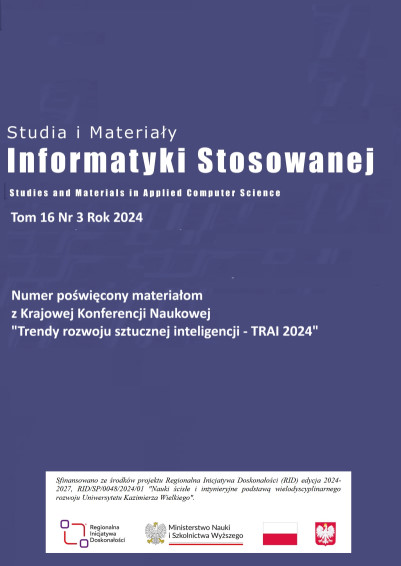The use of AI technology in the search for medieval defensive fortifications in the city of Elbląg
DOI:
https://doi.org/10.34767/SIMIS.2024.03.07Keywords:
Artificial intelligence, Machine learning, Photogrammetry, Area mapping, Photogrammetric flights, ClassifiersAbstract
AI technology in terrain mapping automates processes that previously required human work and enables the creation of more accurate and advanced maps, 3D models in a shorter time. Drones enable the recording of large data sets: photos, videos, telemetry data, which are then analyzed by AI algorithms during the creation of 3D models, segmentation and classification of objects and detection of anomalies. AI algorithms automatically combine photos, correlate characteristic points and remove image distortions. They automatically recognize and classify objects such as buildings, roads, railway lines, rivers, overhead power lines. The mapping process becomes more accurate, and 3D maps and models become more accurate and tailored to the needs of the recipient. AI algorithms segment images recorded by drone on-board cameras into different classes, enabling the generation of environmental hazard maps, agricultural maps and urban area maps. AI technology analyzes data from different periods and automatically detects changes in isolated areas.
References
Hauke K., Stobbe H. „Die Baugeschichte und die Baudenkmäler der Stadt Elbing”. Stuttgart 1964.
Jagodziński M. „Osadnictwo w okresie wczesnodziejowym”. [w:] Historia Elbląga, t.1 (do 1466 r.), red. S. Gierszewski, A. Groth, s. 17–59, , Gdańsk 1993.
Kraus K. „Photogrammetry. Geometry and Laser Scans (Second Edition)”. Walter de Gruyter, Berlin, New York 2007
Nawrolska G. „Rozwój przestrzenny Elbląga w średniowieczu i okresie wczesnonowożytnym”. Archaeologia Historica Polona, tom 23, 2015.
Orengoa H.A., Garcia-Molsosa A. „A brave new world for archaeological survey: Automated machine learning based potsherd detection using high-resolution drone imagery”. Journal of Archaeological Science 112, 2019.
Poirier N., Baleux F., Calastrenc C. „The mapping of forested archaeological sites using UAV LiDaR. A feedback from a south-west France experiment in settlement & landscape archaeology”. ISTE Ltd. London (UK) 2020.
Remondino F., Campana S. „3D Recording and Modelling in Archaeology and Cultural Heritage Theory and best practices”. BAR International Series 2598, Italy 2014.
Tapete D. „Remote Sensing and Geosciences for Archaeology”. Journal Geosciences, MDPI AG, Basel (Switzerland) 2018.
Tiwari A., Silver M., Karnieli A. „A deep learning approach for automatic identification of ancient agricultural water harvesting systems”. International Journal of Applied Earth Observation and Geoinformation 118, 2023.
Willis M.D., Koenig C.W., Black S.L., Castañeda A.M. „Archeological 3D Mapping: The Structure from Motion Revolution”. Journal of Texas Archeology and History, V. 3:1-36, USA 2016.
Wright D.J., Harder Ch. „GIS for Science Applying Mapping and Spatial Analysis”. Esri Press, Redlands (USA) 2019.
Zachar L., Horňák M., Novaković P. „3D Digital Recording of Archaeological, Architectural and Artistic Heritage”. CONPRA Series, Vol. 1, University of Ljubljana Press, Ljubljana (Slovenia) 2017.
Zakrzewski P. „Geodesy and photogrammetry in archaeology. Advanced documentation methods used by the Kuwaiti–Polish Archaeological Expedition. Stories told around the fountain. Papers offered to Piotr Bieliński on His 70th Bithday Polish Centre of Mediterranean Archaeology”. University of Warsaw Press, Warsaw (Poland) 2019.
Downloads
Published
Issue
Section
License

This work is licensed under a Creative Commons Attribution-ShareAlike 4.0 International License.

